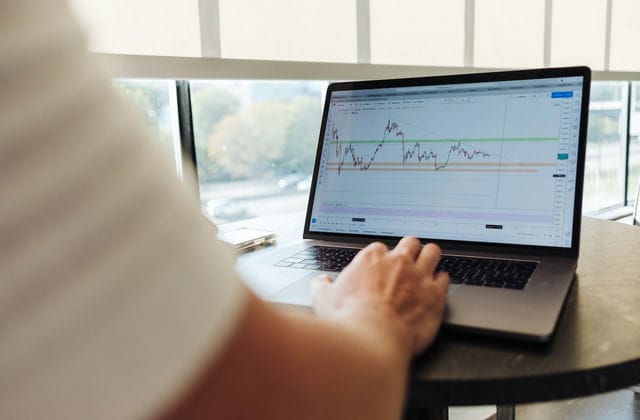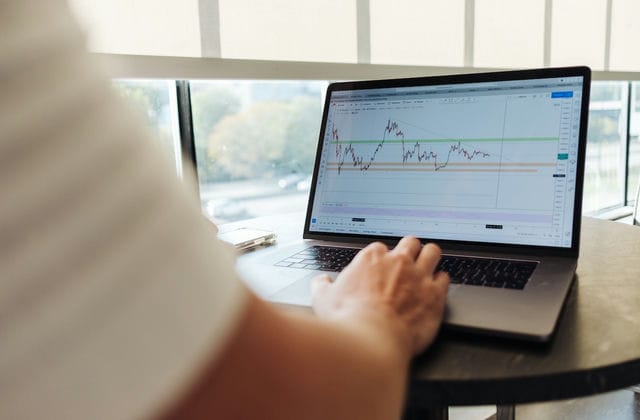Stock market risk is the risk of not being able to sell a stock for more than the purchase price within a predetermined period of time, incurring a book loss or selling the stock for less than the purchase price, resulting in an actual loss.
Types of stock market risk and related prevention strategies
I. Systemic Risk
Systematic risk, also known as market risk, is also known as non-diversifiable risk. It is the possibility of losses to stockholders as a result of the impact and change of certain factors that lead to a fall in the prices of all stocks in the stock market. Systematic risk is mainly caused by macro factors such as the governance, economic and meeting environment, and investors are unable to neutralize the risk through a diversified portfolio. The main categories are as follows.
1. Policy risk
Economic policies and regulatory measures may cause losses in equity returns, which are particularly pronounced in emerging stock markets. Changes in fiscal policy, for example, can affect company profits, and changes in stock market trading policy can directly affect the price of shares. There are also seemingly unrelated policies, such as the housing reform policy, which may also affect the supply and demand of funds in the stock market.
2. Interest rate risk
In the stock market, shares are traded at market prices, rather than at their face value. Changes in market prices are also affected by the level of market interest rates at any time. When interest rates adjust upwards, the relative investment value of a stock will fall, resulting in a decline in the overall share price.
3. Purchasing power risk
The uncertainty of the actual purchasing power of funds due to changes in prices is known as purchasing power risk, or inflation risk. The general theory is that slight inflation will stimulate the growth of investment demand, which will lead to an active stock market; when inflation exceeds a certain percentage, the purchasing power of money will decrease due to a significant devaluation of future investment returns, which means that the actual return on investment will decrease, bringing the possibility of losses to investors.
4、Market risk
Market risk is the most common and frequent risk in equity investment activities, and is directly caused by the rise and fall of stock prices. Especially in emerging markets, the factors causing stock market volatility are more complex, with high price volatility and market risk.
Preventive strategies.
Systematic risk has a large impact on the stock market and is generally difficult to defuse with market behavior, but astute investors can still do advance forecasting and prevention from publicly available information, combined with an understanding of the country's macroeconomy, to adjust their investment strategies.
II. Non-systematic risk
Non-systematic risk generally refers to the uncertainties that affect a particular stock or class of stocks. Factors such as the management of a listed company, its financial position, market sales, major investments, etc., whose changes will have an impact on the company's share price. This type of risk mainly affects a particular type of stock and is not directly linked to the rest of the market. The main categories are as follows.

1、Operational risk
Operational risk mainly refers to losses to investors as a result of a listed company's business downturn, or even failure or collapse. Changes in a listed company's operations, production and investment activities lead to changes in the company's earnings, resulting in a reduction or loss in the principal amount of investor earnings. For example, changes in the economic cycle or business cycle on the earnings of listed companies, the impact of changes in competitors on the operation of listed companies, the management and decision-making level of listed companies themselves may lead to operational risks, such as investors buying junk stocks or low-priced shares may bear the risk of delisting listed companies.
2、Financial risk
Financial risk refers to the company's risk arising from raising funds, i.e. the risk that the company may lose its solvency. The unreasonable financial structure of the company will often cause financial risk to the company. The company's financial risk is mainly manifested in the inability to pay debts as they fall due, the risk of interest rate changes and the risk of refinancing. The main factors that create financial risk are the capital-liability ratio, the maturity of assets and liabilities, and the structure of debt. Generally speaking, the higher the company's capital to liability ratio and the more unreasonable the debt structure, the greater the financial risk.
3. Credit risk
Credit risk, also known as default risk, refers to the possibility of failing to pay principal and interest to equity holders on time and causing losses to investors. This type of risk is mainly for bond investment varieties, for stocks only in the case of corporate bankruptcy. The immediate cause of default risk is the poor financial position of the company, the most serious being the bankruptcy of the company.
4、Moral risk
Moral risk mainly refers to the possibility that the unethical behavior of the managers of a listed company will bring losses to the shareholders of the company. The relationship between shareholders and managers of listed companies is a kind of principal-agent relationship. As the objectives pursued by managers and shareholders are not necessarily the same, especially in the case of information asymmetry between the two sides, the behavior of managers may cause damage to the interests of shareholders.
Preventive strategies.
For non-systematic risks, investors should learn more about securities, understand, analyses and study the macroeconomic situation and the operating conditions of listed companies, enhance their awareness of risk prevention, master risk prevention techniques and improve their ability to resist risks.
Third, the risk of trading process
In the actual investment activities, investors should also prevent the risk of the transaction process. The risk in the trading process is further divided into trading behavior risk and trading system risk.
(I) Investment trading behavior
With the development of the securities market, securities trading is becoming more and more complex, and it is difficult for ordinary investors to fully adapt to such changes due to their limited personal knowledge and limited time, and some losses that should not occur often occur. For example, they miss the payment of allotment shares, forget to exercise their rights or even choose illegal trading outlets and trading methods. There are also risks that are caused by irregularities of the brokerage firms but the losses are passed on to the investors, such as misappropriation of margin, illegal designation of stock account numbers and unreasonable freezing of stocks.
Preventive strategies.
1, The brokerage firm to open an account to have a clear understanding of the choice of a reputable securities business, the choice of brokerage firm should consider the main criteria include: legality, company size, reputation, quality of service, hardware and software and supporting facilities, internal management status. For example, Guoxin Securities is a reputable and well-known brokerage firm.
2, Keep their own transaction password, capital account number, shareholder code, ID card and other personal identification information, do not tell others at will the transaction password even if it is the securities company.
3, leave accurate contact information including mobile phone, telephone, mailing address, e-mail, etc. when opening an account, and notify the brokerage company in a timely manner when the contact information changes, so that the securities company can be notified in a timely manner when the listed company issues important announcements or other major market events.
4, Often login to the account securities company's website and online trading system enquiries to understand their own shares of the announcement information, account capital situation.
5, Consider hiring a professional investment adviser at your brokerage firm to help look after your stock account.
(II), Trading system risk
In order to facilitate investors to trade, securities companies often provide a variety of trading methods for customers to use, the current market exists in the main trading methods are online trading, telephone commission trading, business outlets on-site counter self-help trading, mobile phone trading, etc.. These entrustment methods all have the following common risks.
1, Due to technical equipment reasons caused by the transaction commission function cannot be used or delayed, transfer function cannot be used or delayed risk.
2. The risk of delayed trading due to the number of traders and the need to wait because of a busy and slow trading system.
3、The risk of commission against the will of the investor due to leakage of personal identity related information such as trading password, shareholder code and fund account number.
4、Losses caused by investors' errors or invalid operations in the process of various trading mandates mentioned above.
5. The risk of failure to trade due to unpredictable and uncontrollable factors resulting in system failure, equipment failure, communication failure, power failure and other unexpected incidents.
In addition, there are some more specific risks associated with online trading and mobile phone trading.
1. Trading orders may be subject to interruptions, pauses, delays, data errors, etc. due to busy networks and slowed transmission speeds caused by excessive use of other non-securities trading.
2、The data transmitted online may be obtained by certain individuals, groups or institutions through some illegal channels, making the investor's information stolen illegally and causing losses.
3、The securities quotation information and other securities information released online may be delayed due to the speed of transmission or due to other unpredictable factors such as malicious attacks by hackers, which may result in errors, misleading, delays or malicious modifications, which may affect the investor's investment behavior and cause losses.
4. As mobile phone trading is essentially also a kind of online trading, it has all the risks of online trading, but mobile phone trading also requires the transmission of customer trading instructions through China Mobile's GPRS wireless network, and trading instructions may be interrupted, paused, delayed and data errors due to GPRS network factors, bringing some uncertainty to investment behavior.
Preventive strategies.

Risks in the trading system can be prevented by the following measures.
1, Try to open a variety of trading methods and skilled in various trading methods, in the case of a trading method cannot be used alternative trading methods.
2、Keep your trading password, fund account number, shareholder code and other personal identification information in a safe place and do not tell others at will.
3. Use high security authentication methods as far as possible. For example, do not use the same password when setting up your trading password and authentication password; avoid using easy-to-guess digital strings such as birthdays, telephone numbers and ID card numbers as passwords; do not use only numbers for authentication passwords; pay attention to case when using letters and advocate using a combination of letters and numbers; change your trading password and authentication password regularly, etc.
4. Do not conduct transactions and enquiries with strangers around. Try to avoid using online trading in public places such as internet cafes, and exit the operating interface in time after online trading and mobile phone trading. Telephone commission as little as possible to use the LCD telephone commission, if the use of this type of telephone commission, after the use of the telephone key, and then pick up again to dial a few random numbers, so that the original commission when the number disappears.
5, In the transaction entrusted to place an order operation, should be cautious, to do "a slow, two look, three through", pay special attention to prevent the error of the direction of the order and the number of orders placed in error, so as not to bring the operation of the risk.
6、If for any reason you are unable to trade through the normal trading channel, you should promptly contact the service hotline of each branch of Guoxin Securities for assistance.
IV. Special Risks
Investors should also be fully aware of some special risks as follows.
(I) Force majeure risk.
Risks arising from the inability to trade normally in the stock market due to earthquakes, typhoons, floods, fires, wars, strikes and other force majeure reasons.
(ii), Stock Market Crash.
There is a special form of risk called a stock market crash, which refers to an abnormal economic phenomenon in which the stock market's inherent contradictions accumulate to a certain extent, due to a sudden drop in stock prices influenced by a contingent factor, thus causing a huge economic upheaval and resulting in huge losses. A stock market crash is different from general stock market volatility, and also different from general stock market risk, with the characteristics of suddenness, destructiveness, linkage and uncertainty. The impact of a stock market crash on financial markets is enormous, and its occurrence is often the beginning of an economic downturn. An example is the Great American Stock Market Crash of 29 October 1929. The bubble formed by excessive speculation was the direct cause of the crash.
On Tuesday 29 October 1929, just after the New York Stock Exchange opened, a violent sell-off swept in, turning all stocks into hot potatoes, regardless of price or cost, as long as they were dumped, and a 22% drop in the Dow Jones ensued. This was the "worst day" in the 112-year history of the New York Stock Exchange, and with this day, known as "Black Tuesday", the United States and the world entered a decade of economic depression.
Causes of stock market risk
There are two main types of risks that can cause investors to suffer losses in the stock market: risks caused by external objective factors and risks caused by the subjective factors of the investors themselves.

1. Interest rate risk
This is a risk arising from changes in interest rates and changes in the supply of money, which leads to changes in demand for securities and hence changes in the price of securities. When interest rates fall, people find it uneconomical to save in banks and will take their money out to buy securities, resulting in an increase in the number of buyers of securities and a consequent rise in the price of securities; conversely, when interest rates rise, people find it economical to save in banks and fewer people will buy securities and the price will fall. In the developed countries in the West, interest rates change frequently and the interest rate risk is higher when the share price rises due to a fall in interest rates or falls due to an increase in interest rates, whereas in the following underdeveloped countries, interest rates change less frequently and the risk arising from changes in interest rates is correspondingly lower and people are less aware and less able to take such risks. For example, in August and September 1988, China's bank interest rates rose, for some people who originally bought bonds, when the original purchase was because of the bonds than the bank interest rate is high, some good to buy through a variety of relations, at this time, the bond interest rate than the bank interest rate fell, and also cannot preserve the value, so there are many bond investors to the bank, the issuance of bonds, as well as the media appeal, request to raise the This is why many bond investors appeal to banks, bond-issuing companies and the media to raise the interest rate on bonds. In fact, this is a reflection of their lack of common sense and their lack of knowledge of the interest rate risks involved in buying securities.
2. Price risk
Also known as inflation risk, this refers to the risk of price changes affecting the price of securities. There are two types of risk here: one is the change in the price of some important items (such as electricity, coal, oil, etc.), which affects the cost and earnings of most products; the other is the change in the price index. Generally speaking, when the price index rises, the currency depreciates and people feel that they are losing out by buying bonds, which causes the price of bonds to fall. A Treasury bill with a face value of 100 yuan was dumped at 70 or 80 yuan during the 1988 rush to buy it, which was affected by this. Stocks, however, are a means of preserving value, as they are a symbol of owning corporate assets, which increase in value when prices rise, and therefore rising prices often cause share prices to rise as well. On the other hand, rising prices, especially for coal, electricity and oil, increase the cost of businesses and this is not without risk when investing in shares. In general, however, when prices rise and bond prices fall, the stock market thrives.
3. Market risk
This refers to the risk of changes in the price of securities caused by various factors in the securities market itself. The securities market is subject to rapid changes that directly affect supply and demand, including political turmoil, tightening of money supply, government intervention in the financial markets, psychological fluctuations in the investing public and the rise of large speculators, all of which can cause major disturbances in the securities market. In the case of the Shanghai stock market, before June 1991, the value of shares in the hands of stockholders did not increase, but fell below par, so they were not interested in the stock market and were discouraged; those who had capital were reluctant to enter the market in the face of the continuing downturn, resulting in a lack of entry and exit, despite the fact that there were only a few tens of millions of listed shares, there was still an oversupply. After July, under the influence of foreign investors, coupled with the excitement of major projects such as the development of Pudong, the Shanghai stock market was invigorated and the public psychology changed fundamentally, with tens of millions of yuan of shares becoming greatly in demand. It is fair to say that the vast majority of people were not expecting such a freakishly cold and hot stock market, as there were many unpredictable and fortuitous factors involved. In other words, investors who invested in the stock market in June, despite the low prices, ran into many unexpected risks, and because of the high risks, the chances of profit were also high. those who invested in June saw their share prices quadruple by October.
4. Corporate risk
Refers to the listed enterprise because of industry competition, market demand, supply of raw materials, changes in costs and expenses, as well as management and other factors affecting the enterprise





























